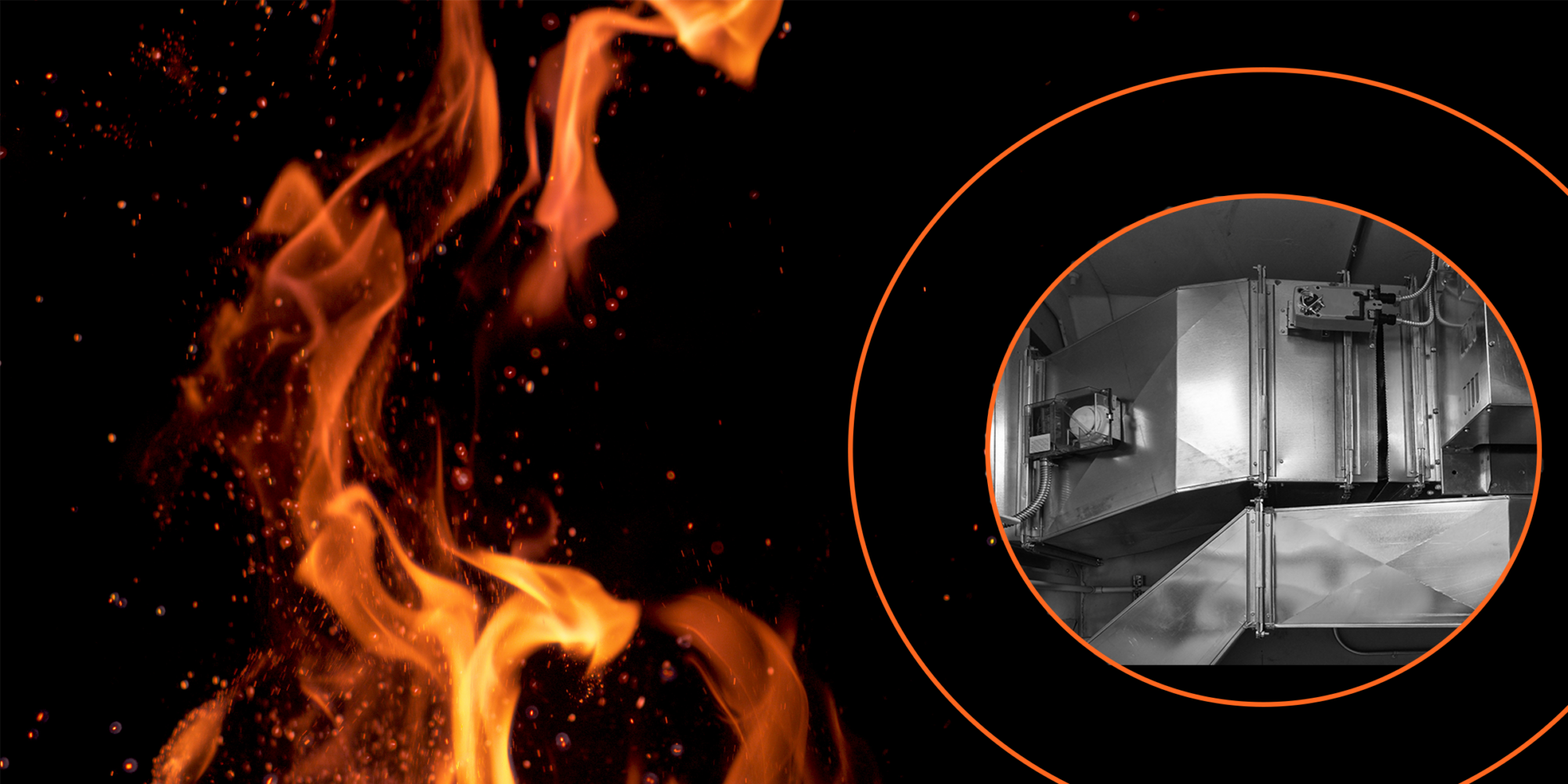In 2021, United States fires accounted for almost $16 billion in damage, with 3,800 deaths and 14,700 injuries.
Fire dampers are an essential component of Heating, Ventilation, and Air Conditioning (HVAC) systems that help prevent the spread of smoke and fire in buildings, especially since a small flame takes less than 30 seconds to breed a major fire.
Fire dampers are typically installed in HVAC ducts that pass through fire-rated walls or partitions. They are designed to close off HVAC ducts in the event of a fire, preventing the spread of smoke and fire to other parts of the building.
Let’s look at where fire dampers are required, and the integral role springs play in these life-saving solutions.
Where Are Fire Dampers Required?
Fire dampers are required in buildings where HVAC systems pass through fire-rated walls or partitions. Fire-rated walls and partitions are designed to contain the spread of smoke and fire in the event of a fire. HVAC systems that pass through these walls and partitions can act as a conduit for smoke and fire, potentially spreading them to other parts of the building. Fire dampers are required to help prevent this from happening.
Types of Fire Dampers
There are three primary fire dampers: static, dynamic, and combination fire and smoke dampers.
Static fire dampers are the most common type of fire damper and are typically installed in HVAC ducts that pass through fire-rated walls or partitions. They remain fixed until a signal from a fire alarm or other detection system activates them. When activated, the damper closes, preventing the spread of smoke and fire to other parts of the building.
Dynamic fire dampers are used in HVAC systems with variable air volume (VAC) components. VAC systems are designed to adjust the amount of air flowing through HVAC ducts based on the heating and cooling needs of the building. Dynamic fire dampers are designed to close automatically even with moving air in the ductwork, preventing the spread of smoke and fire to other parts of the building.
Combination fire and smoke dampers are designed to prevent the spread of smoke and fire in HVAC systems. These dampers are typically used in applications where there is a risk of both smoke and fire, such as hospitals, nursing homes, and other healthcare facilities.
Role of Springs in Fire Dampers
Springs play an integral role in the operation of fire dampers.
Fire dampers typically use springs to hold the damper blades in the open position, allowing air to flow freely through the HVAC system. When the damper receives a signal from a fire alarm or other detection system, the springs release, and the damper blades close, preventing the spread of smoke and fire through the HVAC system.
Conforce® Springs, Spiral Torsion Springs, and Wire Forms are three commonly used springs in Fire Dampers.
Constant Force Springs, or Conforce® Springs, are used to actuate metal curtains in fire dampers, effectively preventing smoke or fire spread in ductwork by providing consistent force, smooth operation, and compact design. Typically made from Type 301 stainless steel, these springs can be customized with various end details and mounting methods, making them an ideal choice for fire damper applications.
Spiral Torsion Springs, often made from flat steel, serve as an alternative to Conforce Springs for closing fire damper curtain blades. Symmetrically spaced coils deliver torque in applications requiring less than 360° of rotation, exhibiting a linear torque curve. Crafted from various materials and customizable end details and mounting methods, these springs find use in industries like medical devices, automotive, and architectural hardware.
Wire Forms, employed in fire and smoke dampers for closing metal curtains and latching, can be custom-made for mid to mass production. Additionally, Wire Forms find applications in industries such as aerospace, defense, medical devices, window shades, and automotive.
How Vulcan Spring Enhances Fire Smoke Damper Efficiency
Fire dampers play a critical role in building safety systems, and their proper operation can mean the difference between life and death in the event of a fire. Springs must be properly engineered or manufactured to successfully actuate the damper blades when needed, stopping the spread of smoke and fire.
Partnering with the right spring manufacturer is essential to ensure the safety and functionality of fire dampers. Vulcan Spring is a leading global supplier high-volume spring solutions designed to enhance fire damper efficiency and improve safety. Our customer-engineered Conforce® Springs, Spiral Torsion Springs, and Wire Forms are crafted from high-quality materials and manufactured to exacting standards, ensuring the safety and functionality of fire dampers.
Vulcan Spring accommodates the specific needs of fire and smoke dampers with precision, providing strong force or torque output, even in small spaces. Aligning with Underwriters Laboratories (UL) requirements, our springs optimize the function of both static and dynamic fire dampers. Our springs are tested extensively and measured to ensure that the partnering dampers offer high quality, performance, and security to people and the buildings they occupy.
Are you looking to ensure optimal design and function prior to manufacturing? Reach out to our team to learn more about our spring solutions for fire dampers and how we can help elevate the safety of your building.


